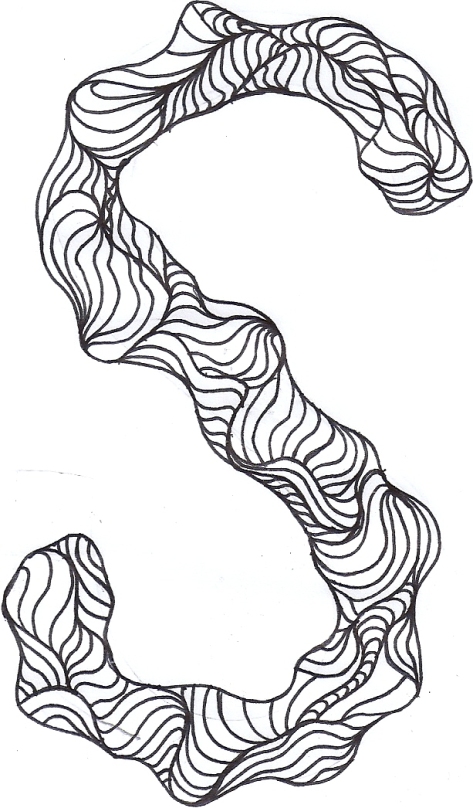Letter Nineteen is S.
 S, 19th letter of the alphabet, representing the common sibilant, voiceless in spur, voiced in rose. Its Greek equivalent is sigma. In former times the nonterminal s was written or printed much like an f without the right half of the cross bar. In chemistry S is the symbol of the element sulfur.
S, 19th letter of the alphabet, representing the common sibilant, voiceless in spur, voiced in rose. Its Greek equivalent is sigma. In former times the nonterminal s was written or printed much like an f without the right half of the cross bar. In chemistry S is the symbol of the element sulfur.
It is descended from the Semitic letter sin or shin, a name meaning tooth, which had a sound somewhat like the modern English sh. The Greeks had various letters for sibilants, but after about 600 bc they used mainly sigma for s. The letter as we know it today achieved its final form after adoption into the Latin alphabet. In modern English, the two common pronunciations of s are voiced and unvoiced alveolar fricative consonants, as heard in his and hiss. In making the sound, the speaker lightly touches the upper toothridge with the blade or tip of the tongue, while the sides of it lightly touch the side teeth making a narrow passage to allow the escape of breath with or without voice. The combination of s and h represents in English another sibilant sound, as in show and wash. However, s alone has this sound in sure, sugar and (with i) mission, and can have the voiced pronunciation of the combination, as in division and treasure. This latter pair of sibilants are palato-alveolar fricative consonants. The sounds are made in a similar way to to those given above for ordinary s, but the front of the tongue is additionally raised toward the hard palate (roof of the mouth). In a few words, such as island and aisle, the s is not sounded at all. (Encyclopedia.com)
| NATO phonetic | Morse code |
| Sierra |
 |
 |
 |
| Signal flag | Flag semaphore | Braille dots-234 |
